After a chance discovery in a Fort William museum and months of painstaking detective work, a modern recreation has been made of Flora MacDonald’s 1750 wedding attire.
Flora MacDonald, born 300 years ago this year, achieved legendary status for the bravery she showed in spiriting Prince Charles Edward Stuart, Bonnie Prince Charlie, away from Benbecula where he had fled after his defeat at the Battle of Culloden.
With Government troops hot on his heels, it would need nothing short of a miracle to facilitate his safe passage away from the islands.
Flora, who grew up in Milton, South Uist, was visiting Nunton in Benbecula when the Prince and his small entourage took refuge there.
She dressed the 5’10” Charles as Betty Burke, an Irish servant, and managed to procure his escape ‘Over the Sea to Skye.’
Flora was lucky to avoid dire punishment after her role in the escape came to light and she was detained in London until the 1747 Act of Indemnity brought her pardon.
Three years later, on November 5 1750, she married Allan MacDonald of Kingsburgh, Skye and that’s where this remarkable detective yarn begins.
Scottish dress historian Jo Watson was in the West Highland Museum last year, working with one of the museum’s rare exhibits, a beetle wing dress owned by Skye crofter Barbara Morrison.
Jo, kiltmaker Nikki Laird and museum curator Vanessa Martin decided to get a few boxes out of storage for a rummage, including a box labelled MacDonald Tartans.
Out of this box emerged a small piece of fabric wrapped in tissue, with a hand-written label stating it was part of Flora MacDonald’s wedding dress.
Video of the moment of the discovery
Jo had the presence of mind to record this video as they made the discovery.
The hand-written label said it was Tartan of the Isles and was given to Reverend A.J MacDonald of Killearnan, by General John MacDonald, one of Flora’s nephews.
It was donated to the museum in 1962.
There was also a typed label from the 1960s quoting from a 1930s book, The Truth About Flora MacDonald, saying that at her wedding she was ‘robed in a dress of Stuart tartan with which she was presented when in London by a lady friend on condition that she would wear it at her marriage.’
But all was not as it appeared
This turned out to be wrong, Jo established, as clan tartans didn’t exist then.
Jo’s further research revealed that Flora actually wore a black silk dress at her wedding as she was in mourning for her brother at the time, so what did the piece of tartan really represent?
Jo decided to have the piece of tartan recreated, and there the real challenge began.
She quickly found out that the nature of the pattern is such that even specialist mills can no longer reproduce it.
By this time, Jo had received funding from the Spirit:360 Spirit of the Highlands project and had to think laterally.
She said: “The pattern has a gigantic warp, it’s really big and wide, and has to be hand woven.
“Also I realised early on the pattern is completely unsuitable for a dress, so it must have been an earasaid [very large rectangular plaid wrap] and not her wedding dress.”
She contacted fellow UHI post-grad Ashleigh Slater of Tartan Caledonia in Blairgowrie.
“He came to the museum at the start of this year, took photos and measurements and spent more than 100 hours researching 18th-century weaving techniques, which are vastly different to today.”
Ashleigh came up with a sample using the weaving yarn he regularly uses – but there was a problem.
Jo said: “It was far too soft and had too much drape for it to be used.”
Yarn analysis
The detective work now revolved around analysis of the original yarn and its dyes.
The yarn itself was made from the now extinct Duniface sheep, an ancient breed once commonplace in the Highlands and islands.
Ashleigh managed to source the nearest equivalent from Sussex, England, from Romney/Leicester cross sheep, dyed to match as closely as possible Flora’s tartan.
It took him two months in between teaching commitments to create the fabric.
The task of finding out which dyes were used in the original fell to Edith Sandström, a post-graduate at Edinburgh University.
She found the orangey-brown colour to be extremely rare, not one so far found in any other tartan.
It possibly came from a lichen local to Skye and the Uists.
The red was as expected derived from cochineal, and the blue was Saxon Blue, a water-soluble indigo dye newly invented and all the rage in London at the time.
The real wedding dress
As Ashleigh wove the earasaid, Jo set to researching Flora’s actual wedding dress.
She traced the black silk dress all the way through descendants to Vancouver, Canada.
It had been altered down the generations and now only remains as a wide border on a 1920’s style frock.
Many more hours of detective work later, Jo came up with a pattern for a 1750 dress which she reckons must be pretty similar to the one Flora wore.
Corset creation
She recreated linen and reed stays which took six weeks to make.
“It’s quite a dull process quilting the panels and the sewing of the panels together is extremely tough on the hands.
“I required pliers to pull the needle through the layers of fabric.
“I was very happy with the resulting stays and intend to use these in the future for educational purposes.”
Being biodegradable, not many examples of such corsetry remain.
Linen undergarment
Then Jo made a linen shift, something worn by all at the time as an undergarment.
Next, a hoop petticoat from cane and hemp linen to give the perfect silhouette.
Finally, on top, a dress of black pure silk satin, a choice inspired by Allan Ramsay’s famous portrait of Flora.
Jo was lucky to find a model for the wedding dress in High Life Highland tour guide Annette McKittrick, who is almost the same size as Flora.
She said: “Flora was 4ft 11” and even after seven children, had a 34-inch chest and 26-inch waist. I’m so grateful to Annette for agreeing to go out of her comfort zone and agree to model for me.”
Many hours of sewing and sleepless nights later, the dress was ready for a photoshoot at Culloden, complete with Ashleigh’s earasaid.
Jo hopes the garments will go on display through the Spirit:360 Spirit of the Highlands project.
Spirit:360 is a commissioning programme for emerging and established creative professionals – writers, musicians, filmmakers, visual artists, and others – to create new work inspired by local stories that reflect the theme Spirit of the Highlands.
It is supported by the Highland Place Partnership through Creative Scotland Place Partnership funding.
Spirit:360 saw commissions of up to £1,000 made available to creative professionals based within, or originally from, the Highland Council area, and successful commissions will be showcased soon on a new online platform alongside the story which has inspired the work.
You might enjoy:
Angus Peter Campbell: On Betty Burke, Bonaparte and Joe Biden
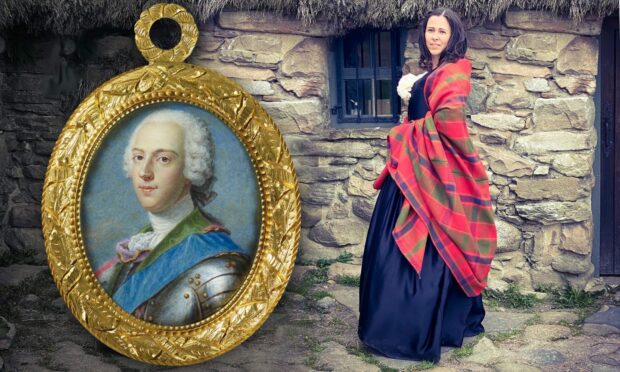
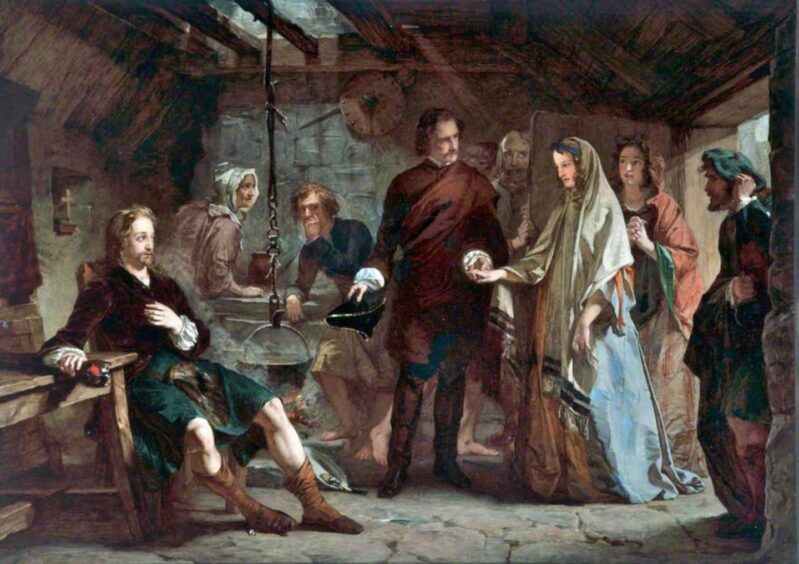
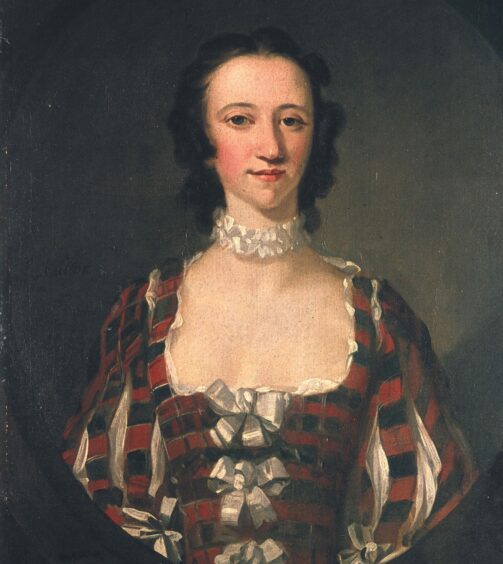

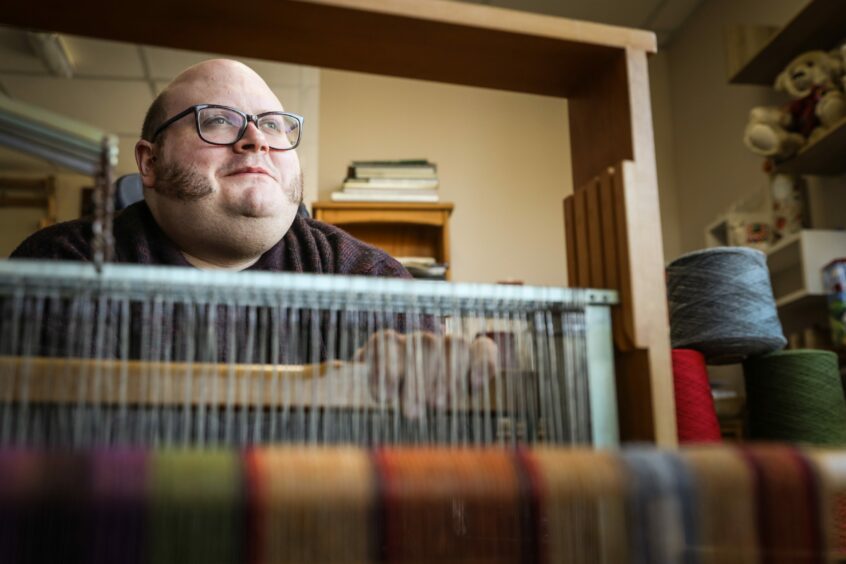

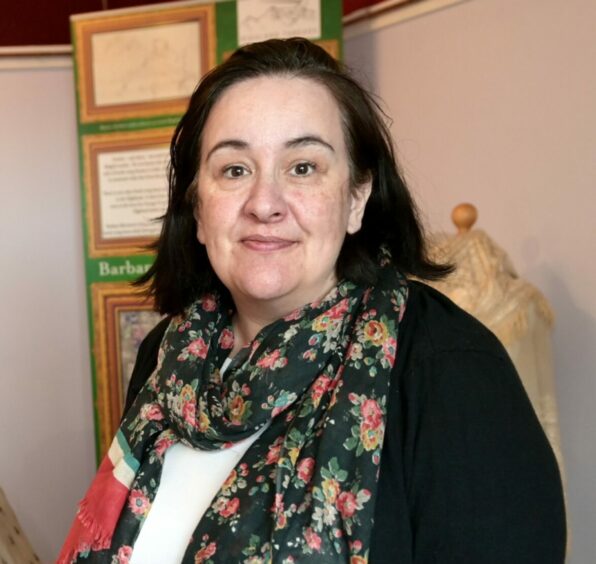
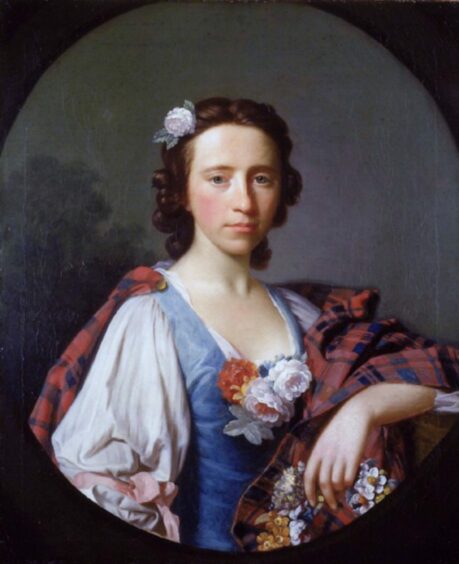
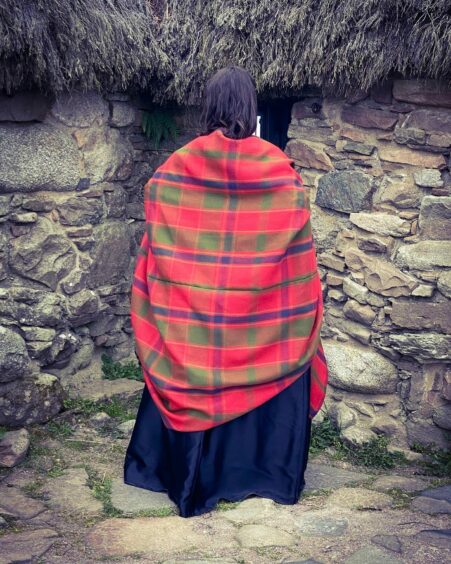
Conversation